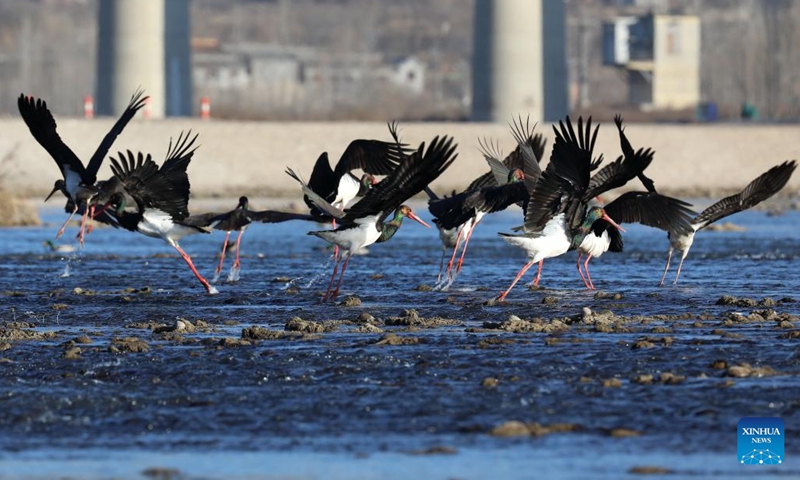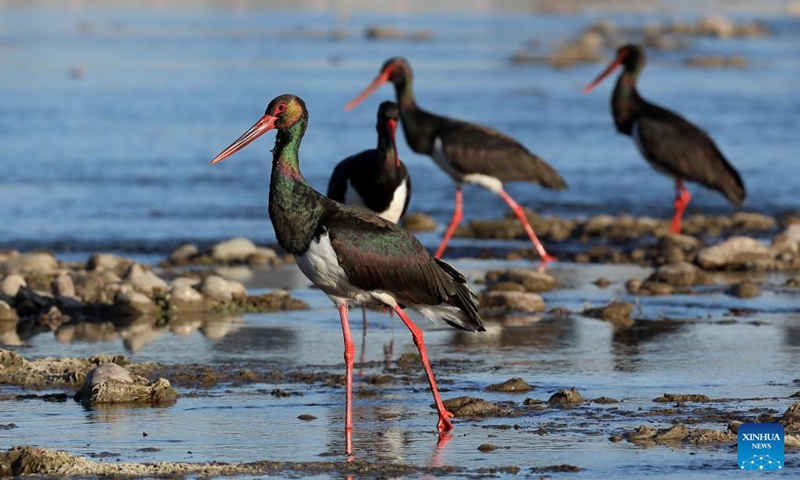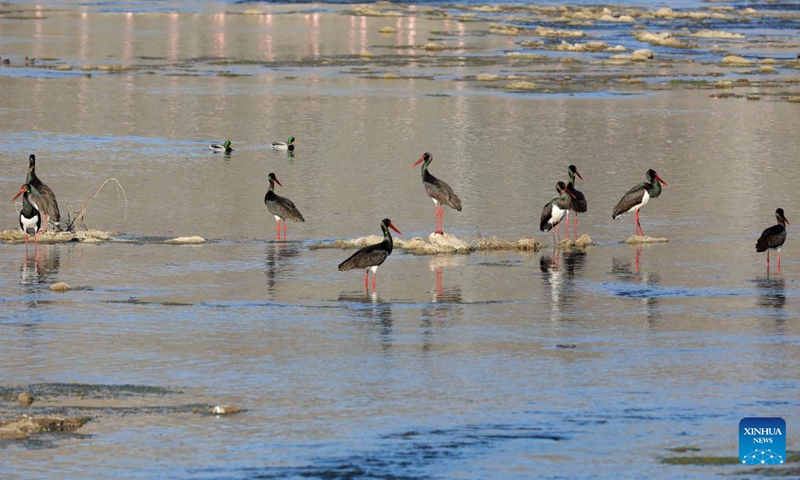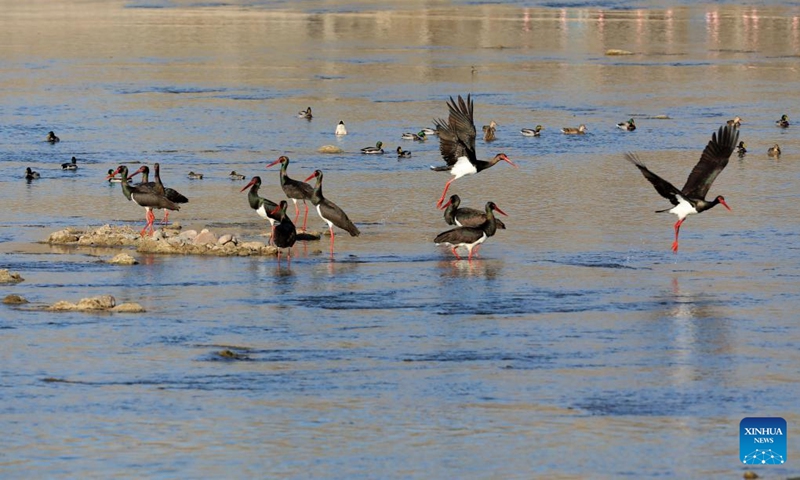
Black storks frolic at Mianman River in Jingxing County, north China's Hebei Province, Dec. 22, 2022. Black stork is a migratory bird species under first-class national protection in China. There are fewer than 1,000 remaining in East Asia.(Photo: Xinhua)

Black storks forage at Mianman River in Jingxing County, north China's Hebei Province, Dec. 22, 2022. Black stork is a migratory bird species under first-class national protection in China. There are fewer than 1,000 remaining in East Asia.(Photo: Xinhua)

Black storks forage at Mianman River in Jingxing County, north China's Hebei Province, Dec. 22, 2022. Black stork is a migratory bird species under first-class national protection in China. There are fewer than 1,000 remaining in East Asia.(Photo: Xinhua)

Black storks forage at Mianman River in Jingxing County, north China's Hebei Province, Dec. 22, 2022. Black stork is a migratory bird species under first-class national protection in China. There are fewer than 1,000 remaining in East Asia.(Photo: Xinhua)
